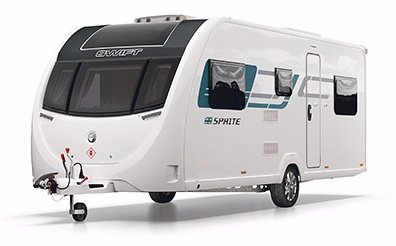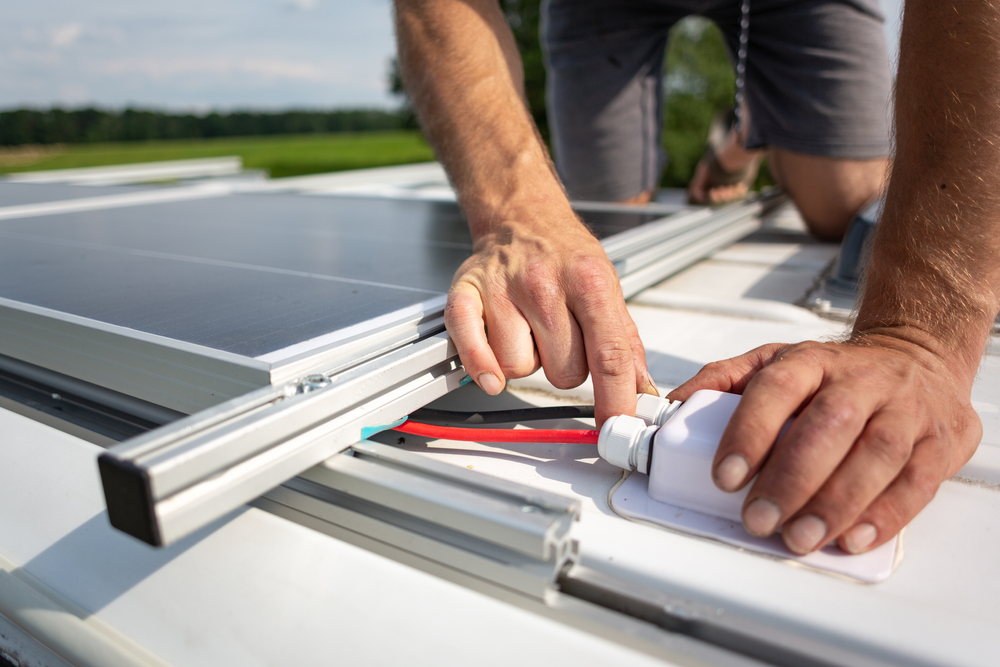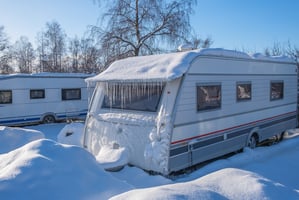Preparing your caravan for winter hibernation
As costs rise and the demand for off-grid travel grows, more and more caravan owners are now turning to solar panels to help power their adventures on the road. Whether you’re wild camping in the Scottish Highlands or pitching up in a remote corner of Cornwall, a good solar setup can give you energy independence, lower your running costs and reduce your carbon footprint.
Sounds good, no? Here’s a little look at what you need to know before you invest…
What do caravan solar panels do?
Caravan solar panels convert sunlight into electricity to power your leisure battery (or batteries), giving you a renewable source of energy. This electricity can then be used to run 12V appliances, lighting, and - in some setups - charge devices or run 240V appliances through an inverter (a device which takes DC power that’s stored in the battery and converts it to AC power that can be used to run appliances).

Why should I use them in a caravan?
There’s a few reasons why it might be a good idea for you. First, it gives you the freedom to travel a bit more off-grid, without the need to rely on electric hook-ups. Over time it can save you money in the long-term, after the initial investment, giving you free energy from the sun. It’s seen as being very eco-friendly, as it reduces reliance on fossil fuels. Finally, the panels are quiet and pretty low-maintenance - unlike generators, solar gives off no noise and requires minimal upkeep.
The different types of caravan solar panels...
Fixed panels
These are most commonly mounted on the roof. They are durable and long-lasting, and ideal for those people who tend to want a permanent setup.
Flexible panels
Lightweight and bendable, this type of panel can be bonded to curved surfaces. Some people say they are slightly less efficient than fixed panels, but in general they are sleeker and potentially more discreet.
Portable panels
These aren’t fixed to the caravan, and instead can be positioned to catch the sun. They are great for occasional use, or if you end up pitching partly or wholly in the shade.

How many watts do I need?
This depends on your usage. As a rough guide, 100W is enough for basic lighting, charging phones, and a water pump.150 - 200W is likely suitable for longer trips with more appliances, including a TV or laptop. 300W+ is likely ideal if you’re using an inverter or plan to be off-grid for extended periods.
A tip is to always calculate your daily power consumption in amp hours (Ah), then check that your solar setup can replace that amount over the course of a typical day.
Your battery produces roughly 12V to power your equipment, so to calculate how much current (in amps) an appliance will draw from your battery, take its power rating in watts and divide it by 12.
For example, a 24W fan draws a current of 24 Watts ÷ 12 Volts = 2 Amps. If you use that fan for 5 hours a day, you simply multiply 2 Amps × 5 hours = 10Ah used each day to power that particular appliance.
The role of the solar charge controller
A solar charge controller regulates the voltage going from the panel to your battery, making sure it’s charging properly and doesn’t overcharge. You can choose between:
PWM
(Pulse Width Modulation) – these are cheaper and often best suited for smaller setups.
MPPT
(Maximum Power Point Tracking) – these are often more efficient and reliable, especially in variable light, and better for larger systems.
Batteries matter too!
Solar panels are only as useful as the battery storing the energy. Leisure batteries come in different types (such as AGM, gel or lithium), with lithium being the most efficient but generally also the most expensive. Make sure your battery can store enough power for your needs, especially if you’re going multiple days without sun.
Installation
Many people fit their solar panels themselves, especially portable or plug-and-play kits. However, for roof-mounted or more complex setups (especially with MPPT controllers and dual battery systems), you might find that opting for professional installation might be safer and more efficient.
Do solar panels actually work in the UK?
Yes! Even on cloudy days, the panels still generate power - just at a lower rate! In summer, they’re often more than enough to keep you going. In winter, you might need to supplement with hook-ups or a generator, depending on your usage and where you are in the world.
.jpg?width=1000&height=667&name=shutterstock_2173927983%20(1).jpg)
Maintenance tips
It’s important to keep the panels clean and free from debris, such as bird droppings, leaves and grime. Make sure to visually check the wiring and connections regularly, and monitor your battery levels to make sure your system is keeping up with your energy use.
How much does it cost?
A basic 100W setup might cost you around £150 - £300, including the panel, controller, and wiring. Larger systems with MPPT controllers and multiple batteries can run into £600 - £1,500. Still, over time, solar can pay for itself in saved pitch fees and fuel. Generally, the most efficient solar panels have a mono-crystalline panel, which is made from a single silicon crystal, but these are also the most expensive.
There are definitely lots of options to think about! Installing caravan solar panels can offer you a bit more freedom, sustainability and savings over the long term. Whether you’re a full-time caravanner or an occasional user, there’s likely to be a solar setup that can suit your needs and, with a bit of planning, you can power your trips for wherever the road takes you!







